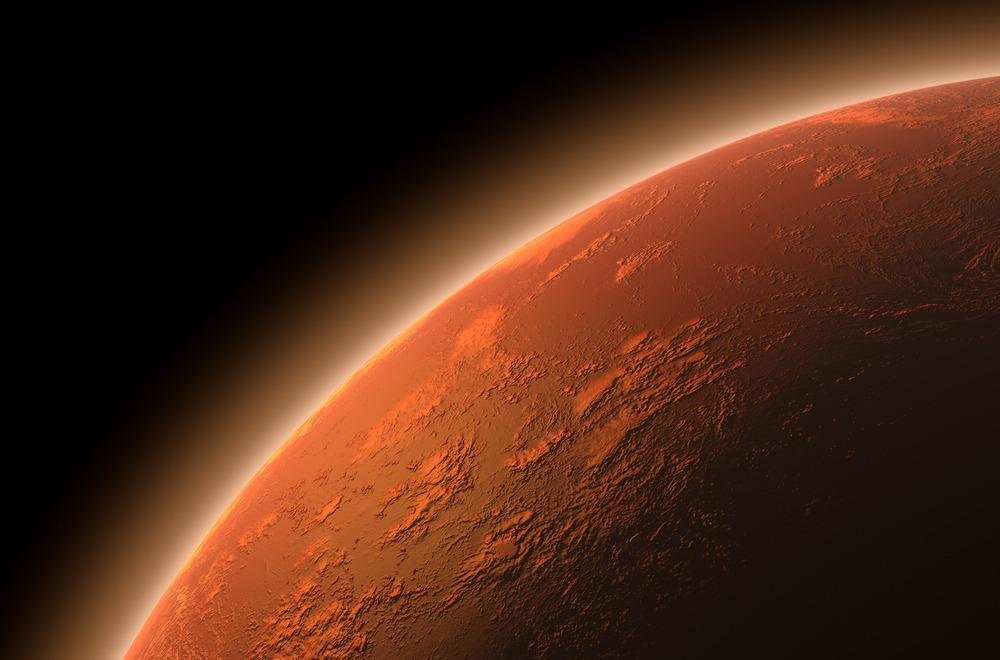Accurate monitoring of the Curiosity rover's entry to Mars is essential to ensure a successful landing. Vital measurements of heat and pressure allow scientists to understand how the entry compares with their intricately calculated predictions. This comparison allows scientists the opportunity to improve future Curiosity missions.

Image Credit: Inked Pixels/Shutterstock.com
How are Sensors used in Spacecraft Design and Use?
Sensor technology is being leveraged in spacecraft design and use to help scientists understand the impact of space travel on spacecraft. Utilizing this technology enables them to improve spacecraft structure and, therefore, functionality, which has significant implications for the success and capabilities of missions. In particular, scientists often collect data on how the fast movement of spacecraft impacts its temperature via the use of a heat sensor, as well as incorporating a pressure sensor to explore the profile of changing atmospheric pressures.
Landing NASA's Curiosity Rover
The Curiosity rover is part of NASA's Mars Science Laboratory (MSL) mission. It is the largest and most advanced rover that has ever been sent to Mars, where it landed back in August 2012. The purpose of the mission was to answer whether Mars had ever had the appropriate environmental conditions to support microbial life.
Early in the mission, the Curiosity rover delivered vital data that helped scientists unravel this mystery. First, chemical and mineral evidence were uncovered that gave clues as to what previously habitable environments on Mars may have looked like. Now, Curiosity continues to explore segments of rock on Mars that may have once harbored microbial life.
Robotically operated rovers are vital to furthering our knowledge of Mars and other planets. To date, there have been six successful robotically operated Mars rovers. Sending new and improved rovers will likely help to uncover more valuable information about the planet. However, landing a rover on Mars is incredibly difficult and requires precise programming from a team of highly talented engineers.
When NASA's Curiosity Rover landed on Mars in 2012, there was a notorious "7 minutes of terror". These seven minutes reflect the time it takes the rover to travel to the surface of the planet once it has entered its atmosphere. During these seven minutes, the rover slows down from 13,000 mph to zero, relying on precise measurements and programming with zero margins for error.
Because the atmosphere on Mars is 100 times less dense than Earth's atmosphere, it is incredibly difficult to slow down. Therefore, structures attempting to land on the planet are subject to intense stress, pressures, and heat flux. To enable future successful missions, it is crucial that scientists collect accurate, fine-grain details on the heat and pressure that rovers are subject to during landing to improve future aircraft design.
Sensor Technology could Help Overcome Extreme Heat and Pressure Challenges
To design and program future successful Mars missions, scientists must obtain data on how the system performs during entry. This data can then be compared against predicted data to highlight places where the model could be improved. Different sensor types, like pressure and heat sensors, can be used to collect this data to give scientists a deeper understanding of external environmental challenges to develop future spacecraft with enhanced capabilities.
How do MEDLI's Sensors Assist NASA's Curiosity Missions?
The MSL Entry, Descent and Landing Instrumentation (MEDLI) is a system that was used to measure heat and pressure changes as the Curiosity rover enters Mars's atmosphere and lands. The system is made up of two instruments: MISP (MEDLI Integrated Sensor Plugs) and MEADS (Mars Entry Atmospheric Data System). The Curiosity rover has seven of each device on its heat shield.
The MISP is used to measure the temperature of the Curiosity rover as it burns through the atmosphere. As Curiosity's thermal protection system burns off, the MISP measures the rate at which it burns. The MEADS is used to measure the atmospheric pressure during descent. Due to their arrangement, the sensors can also determine the orientation of the rover as a function of time. This information allows scientists to compare how their predictions measured against the actual entrance of the rover, allowing them to improve on this for Curiosity's future missions. The data collected by MEDLI on Curiosity's entry to Mars was the largest dataset ever collected for a non-Earth entry.
Video Credit: NASA EDGE/YouTube.com
Future Outlooks on Sensor Systems like MEDLI in Spacecraft and Space Robotics
It is likely that sensor systems like MEDLI will continue to be vital to furthering space exploration. The more data collected and analyzed about how factors such as heat and pressure influence spacecraft on entry, the more improvements can be made for future missions. It can be predicted that, given the importance of these sensor systems, research and development will focus on enhancing their capabilities.
References and Further Reading
Lecher, C. (2012) Amazing Video: Mars Rover Curiosity's Landing Will Be "Seven Minutes of Terror" [Online]. Popular Science. Available at: https://www.popsci.com/technology/article/2012-06/video-curiosity-mars-rovers-landing-seven-minutes-terror/
Lecher, C (2021) The Ten Instruments That Mars Rover Curiosity Will Use to Investigate the Red Planet [Online]. Popular Science. Available at: https://www.popsci.com/technology/article/2012-07/tools-mars-rover-curiosity-will-use-uncover-history-water-and-life/
NASA’s Mars Exploration Program. (2012) MEDLI for Scientists | MEDLI – NASA’s Mars Exploration Program. [online]. Available at: https://mars.nasa.gov/msl/spacecraft/instruments/medli/for-scientists/
NASA’s Mars Exploration Program. (2021) Overview | Mission – NASA’s Mars Exploration Program. [online]. Available at: https://mars.nasa.gov/msl/mission/overview/
Disclaimer: The views expressed here are those of the author expressed in their private capacity and do not necessarily represent the views of AZoM.com Limited T/A AZoNetwork the owner and operator of this website. This disclaimer forms part of the Terms and conditions of use of this website.